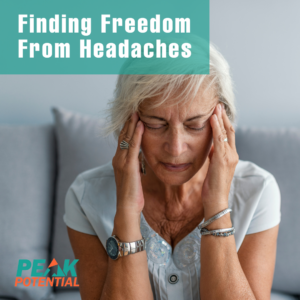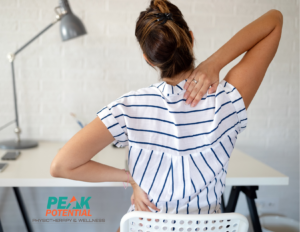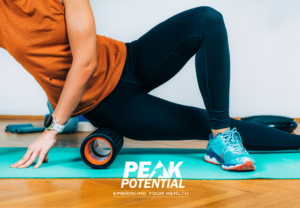I’m hurting and just want to make it through the day with as little pain as possible!
When you just want to manage to keep your job and have a little bit leftover for a normal home life. . . pain medication appears to be the best quick fix.
We just have to understand that this is temporary relief. . . a band aid. Neither over the counter or prescription drugs actually fix the underlying issue. There is a bigger problem going on and medication can often create new problems.
The cause of pain may be a traumatic injury, overuse of a muscle or joint, poor posture, obesity, congenital conditions, tissue break down due to age, inflammation, nerve damage, or disease. This cause must be addressed so we can improve both movement and function, NOT just the sensation of pain.
For example, let’s say you have a flat tire. The cause is a nail that you drove over in a parking lot. You could stop at every gas station and fill it with more air so you could keep driving. However, until you remove the nail and patch the hole, you’ll never fix the real issue of why your tire is losing air.
“But I only take over the counter medication?”
Medications are only masking the sensation of pain, but also heaping on other negative side effects:
- depression and anxiety
- dizziness and drowsiness
- heart problems
- osteoporosis
- liver damage
- stomach ulcers
- kidney problems
- chronic digestive issues
- and the list could go on and on
Many of these side effects even come along with the seemingly harmless over the counter medications. When we can pick them up off the shelf without a prescription, we assume they are safe. The Federal Drug Administration has emphasized lately that they are not as safe as we think.
The over the counter medications most used by our clients are NSAIDS. In fact they are used daily by millions of Americans. These drugs include Advil, Motrin, Ibuprofen, and Aleve.
They can be safe and effective for reducing pain and inflammation, but do not come without risk and must be used appropriately . . .meaning taking the lowest effective dose for the shortness period of time required for relief of your symptoms.
“Can I get addicted to drugs for pain?”
Yes! There is a lot of talk in the media about our countries opioid epidemic. The biggest concern is addiction and abuse of these medication. The other issue is that these medication decrease our ability to tolerate pain and increase our sensitivity to pain, which is actually worsening our problem over time.
There are of course cases when pain medication is necessary and appropriate. At this time the Centers for Disease Control states opioids are recommended for situations of cancer treatment, end of life care, and certain acute cases under closely monitored dosages. In other cases, the CDC recommends other non-pharmaceutical approaches to pain management.
“So, what should I do instead?”
To solve this pain epidemic, we need to truly identify the source of the problem. We can then implement a solution to influence and eliminate it.
Instead of just asking “how much pain are you having?” we need to ask better questions. Are you moving better? Are you able to work? Do you sleep well? Are you able to enjoy the time you spend with your family?
The newest guidelines published by the Centers for Disease Control recommends the following interventions to address the root cause of pain symptoms:
- exercise and movement practices
- nutritional and lifestyle changes
- manual physical therapy
- cognitive behavioral interventions in cases of chronic pain
It’s when we address the problem NOT the symptom of pain that we can reset your brain and body for a pain free life. . . not just a pain free 6-8 hours!
If you are experiencing pain (or managing to by pain free only with medication) head over to our website where you can download FREE Guides we have written for our clients. They address the root cause and treatments you can try for yourself at home to address the problem.
Start TODAY to treat the source of your pain instead of masking it with medication!




